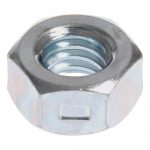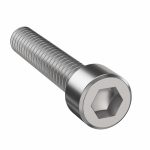Flanges nuts feature an oversized base that flares from the bottom of the nut. This specially designed base acts as an integrated, non-spinning washer. Flange nuts speed up assembly and also find use in applications where their large bearing surface covers oversized holes or slots.
Some typical applications include automotive assembly, manufacturing, and other metal assemblies. Also called collar nuts, flange nuts usually fashion from stainless steel and are available in a multitude of sizes.
In this article, you’ll learn about flange nut types, dimensions, and alternatives.
Types
Flanged Lock Nuts
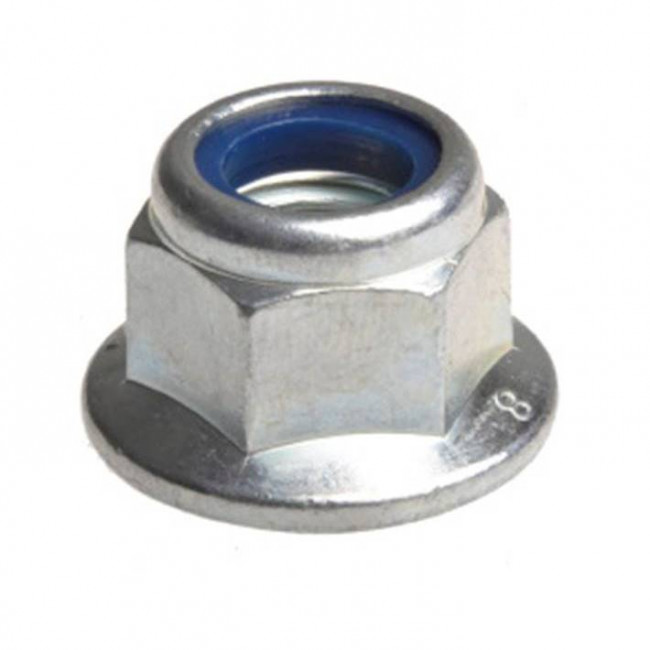
Function
Flange lock nuts, despite their name, do not permanently lock in place. This allows them to modify or withdraw after installation. Their “locking” characteristic, on the other hand, prevents the nuts from loosening until seated, allowing them to function as stop nuts or spacers for rotating components.
Materials
Flange lock nuts are dominant torque hex collar nuts that are one-piece, all-metal. They are not subject to the temperature, and chemical limits of non-metallic (such as nylon) insert type lock nuts since they are all-metal. The bearing surface increases via the protruding circular flange, allowing it to function with uneven and huge holes. They frequently fit with hex flange bolts rated at 150 ksi.
Installation
For the locking mechanism to work, the nuts must firmly engage with the bolt/screw threads. To achieve complete thread contact, bolts or screws should be long enough to extend at least two entire threads beyond the nut face after tightening. To ensure that the nut tightens appropriately, two total threads should be accessible on the head side of the nut.
Because the prevailing torque decreases each time the nut is use, flange lock nuts are only reusable for a limited number of times. When it comes to nut reuse, thread lubricants, and torque values, always follow the manufacturer’s instructions. Because of the increased friction of the locking element, typical torque values should not apply to prevalent torque lock nuts because the joint may not tighten to the correct clamping force.
Application
Lawn and garden equipment, as well as truck manufacture, are examples of commercial and industrial applications.
Serrated Flange Nuts
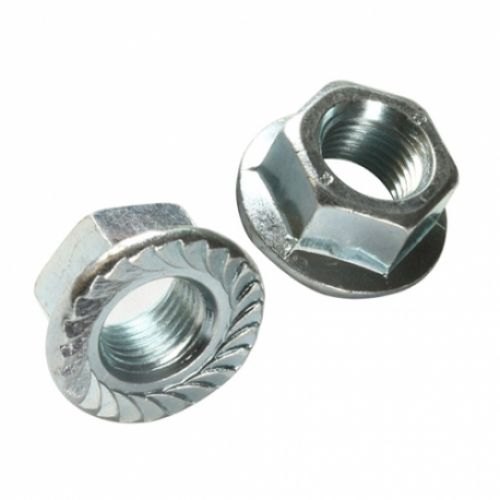
Function
The serrated nuts are hex collar with a serrated bearing surface, also known as serrated face lock, serrated teeth, spinlock, and whiz lock. As the nut tightens, the serrations engage the mating surface and displace material on the mating surface.
Installation
Because the serrations’ gripping action generates a vibration-resistant ratchet-type locking mechanism, less torque requires to install than remove. If the mating surface has a coat or plated, corrosion may develop if the nut wipes the surface treatment away.
Application
This type of fastener prevent loosening when vibrations are present. Serrated nuts are not used with flat or lock washers because the serrations must contact the mating surface to lock. But collar nuts with serrated edges can be reuse. However, always follow the manufacturer’s instructions regarding nut reuse, thread lubricants, and torque settings.
Materials
Stainless steel, carbon steel, alloy steel, nickel alloy, aluminum, copper alloy, and bronze are among the materials available.
Dimensions
The internal threading of the flange fastener measures and displays as Diameter – Thread Pitch. This thread size must match so the bolt and nut fit snugly together. A 1/4″-20 collar nut, for example, can only secure to a 1/4″-20 bolt or thread.
Flange Lock Nut
Flange lock size measures by the nominal thread diameter. Sizes typically range from 1/4″ to 1″ in diameter. Inches usually specify the size in fractional rather than numerical measurements. The size of the flange lock nut determines the width and thickness of the nut.

Courtesy: Stanley Engineered Fastening
Serrated Flange Nut
Serrated flange nuts also measure by the nominal thread diameter. Sizes smaller than 1/4″ present as a numerical size and the higher the number, the larger the size. 1/4″ and above sizes measure in inches and are frequently fractional rather than decimal. Nut width and thickness vary depending on the size of the serrated fastener.

Courtesy: ITA Fasteners
Alternatives
Flange Nuts vs. Lock Nut
A flange nut provides a built-in washer (flange) that distributes the clamping load over a wider area than a regular lock nut. The design does not require a flat washer and is the better option for an oversized or slotted hole. This flange also serves as a washer. This helps distribute the nut’s pressure evenly across the secured section, decreasing the risk of damage and making it less prone to loosen due to an uneven fastening surface.
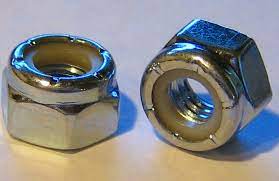
Lock nuts see commonly use in applications that encounter vibration or impact forces. These forces can cause a standard nut to loosen over time. When one or more soft materials make up the screw joint, locking nuts should be utilized. Because the soft material deforms under high surface pressure, it’s challenging to obtain and maintain an increased clamp load. After the torque value applies to the screw, the plastic deformation continues.
Flange Nut vs. Washer and Nut
Using a hex nut and washer instead of a flanged nut introduces an additional inner interface and an additional preload loss due to embedding and relaxation in that interface.
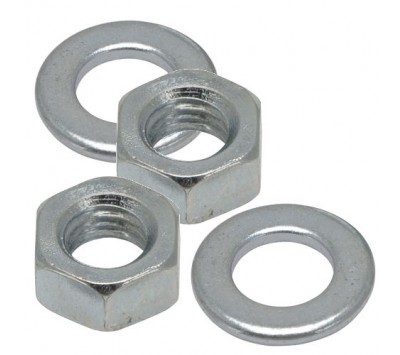
Nuts and washers don’t function the same way as flanged nuts. A flanged nuts’ flange rotates with the nut, whereas a washer does not. Because of its resistance to turning, the washer aids in controlling wear on the mating surfaces. A washer, in effect, protects from deformation better than a flanged nut.
In addition, flange nuts have a washer-like base to distribute pressure over a greater surface area and ensure the fastener stays tight. They are commonly used in manufacturing assembly lines to speed up operations by using a single pin instead of a nut and washer.
